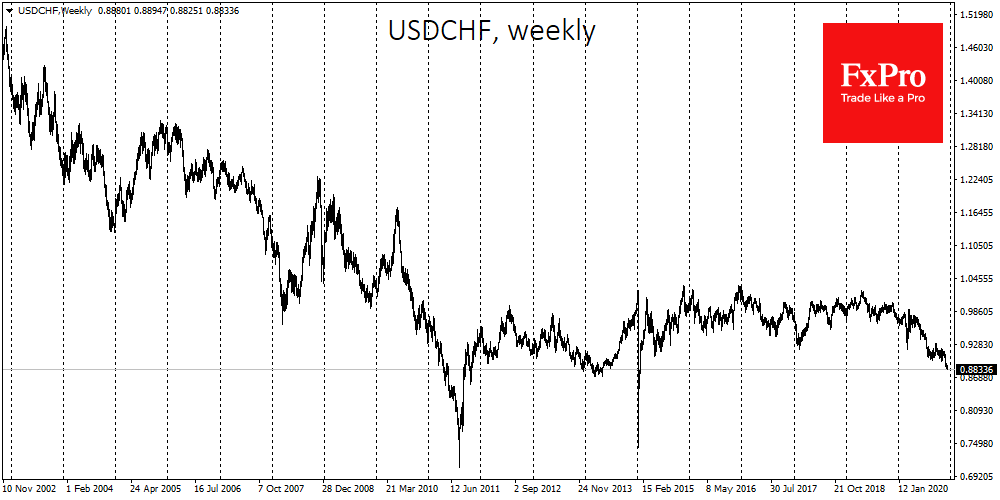Dollar’s fall accelerates
December 17, 2020 @ 13:24 +03:00
The weakening of the dollar is gaining momentum, pushing investors to other assets. There is a rush of demand in many markets, from the euro and gold to equities and cryptocurrency markets.
In the final meeting of 2020, the FOMC promised to continue asset purchases on the balance sheet by 120B monthly, until inflation confidently recovers to 2%. These comments allowed the markets to maintain their rising trend as the dollar continues to decline.

It wasn’t just the Fed that worked against the dollar yesterday, but also weak retail sales data. The released statistics showed a decline of 1.1% in November, which was the second month of decline and reflected amplified concerns of Americans due to increased illnesses. As we can see, the positive sentiment in the stock markets due to the vaccine has been far from the sentiment of ordinary Americans.
Separate studies also suggest that the financial cushion backed by the $1200 checks in April is rapidly depleting. New plans by lawmakers call for $600 cheques to be handed out, but there is no agreement on these payments either. This negatively affects the US outlook, potentially leaving only the Fed as the last defender of the economy through its low rate policy and QE, which is harmful to the dollar.
On Thursday morning the dollar index dipped below the round level of 90, renewing its more than two-year lows. The euro and pound are showing impressive momentum, rising above 1.2230 and 1.3550 this morning.

Additionally, the contrast with the US was reinforced by upbeat PMIs, showing a very robust manufacturing recovery in both the eurozone and the UK.
USDJPY strengthened to 103.20, the lowest since March, below which the pair spent less than two days. The pair was steadily lower more than four years ago. Back then, the Bank of Japan acted against the yen appreciation by sharply increasing QE as USDJPY approached levels near 100.
The Swiss National Bank has acted the most aggressively this year among major CBs, holding the most widespread interventions since 2011 in an attempt to keep the national currency from sharply strengthening. In its currency report published last night, the US Treasury labelled the SNB as a “currency manipulator” for these measures.

This unhonorable title triggered an impulsive rise in USDCHF. However, the general trend quickly took the pair back to 0.8830, an area of almost six-year lows. Since the beginning of the year, USDCHF has lost 10%. Certainly, without massive franc sales, this move could have been much stronger, so it is unlikely that the NBS will reverse its rhetoric today after its quarterly monetary policy meeting.
The FxPro Analyst Team







